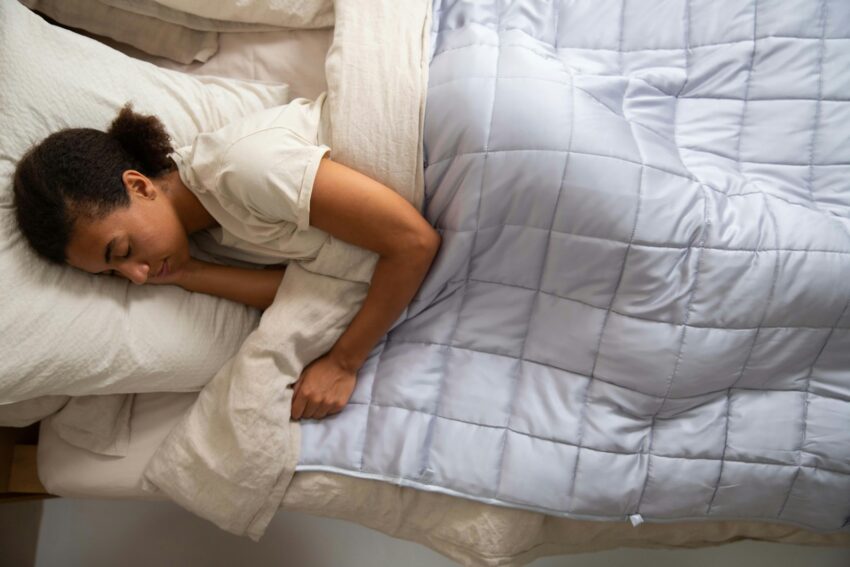Do you seem to have hip pains after waking up? Maybe it is caused by the mattress you sleep on every day. You can reduce hip pain with the right mattress and improve your overall well-being and comfort.
If you want to achieve restful sleep and maintain proper alignment then you should go for the right mattress. Now, let’s explore how a mattress can cause hip pain, the significance of alignment and how yoga can help you improve your overall well-being and comfort.

Understanding the Connection Between Mattresses and Hip Pain
A lot of people underestimate the impact a mattress can have on their bodies. An unsuitable mattress can cause improper spinal alignment, resulting in discomfort and pain in several areas, including your hips.
If the mattress is really firm, it might not contour to the body’s natural curves, causing pressure points that can cause hip pain. Conversely, a mattress that is really soft might also cause you to sink in really deeply, resulting in your spine’s misalignment.
The materials utilized in the mattress also play a vital role. Memory foam, for instance, is created to conform to the body, offering support where it is required.
However, if the foam is really dense, it can cause discomfort, particularly for side sleepers. Latex mattresses are another option that provides a balance of comfort and support, promoting proper alignment while decreasing pressure on sensitive areas like your hips.
Identifying the Right Mattress for You
Choosing the right mattress can significantly reduce hip pain. Here are some factors to consider when selecting a mattress:
Firmness Level
Your preferred sleep position greatly influences the type of firmness you should look for in a mattress. Side sleepers often benefit from a medium-soft to medium-firm mattress that provides adequate cushioning for the hips and shoulders while maintaining support for the spine. Back sleepers usually need a medium-firm mattress that promotes natural alignment, while stomach sleepers may prefer a firmer mattress for preventing their hips from sinking really deeply.
Material
As mentioned earlier, mattress material can impact your comfort level. Memory foam and latex mattresses are popular options, but consider your individual preferences. If you tend to sleep hot, look for a mattress with cooling properties, as excessive heat can exacerbate discomfort and disrupt sleep.
Size
Selecting the correct mattress size is crucial to make sure that you have adequate space for moving comfortably throughout the night. A mattress that is really small might force you into awkward positions, contributing to hip pain. If you share a bed, make sure that both partners have adequate space for sleeping comfortably.
The Importance of Proper Alignment
Proper alignment during sleep is essential for reducing hip pain and promoting overall well-being. Your spine should maintain its natural curve, which can be supported by the right mattress. When your body is properly aligned, pressure is evenly distributed, minimizing the risk of discomfort and pain.
To promote proper alignment, consider the following tips:
Pillow Placement
Using the right pillows can enhance your alignment. Side sleepers may benefit from a thicker pillow that fills the gap between the head and the mattress, while back sleepers often require a thinner pillow to maintain the natural curve of the neck. Stomach sleepers typically do best with no pillow or a very thin one to avoid neck strain.
Sleep Position
Your sleep position can impact your alignment. Side sleeping is generally considered the best position for spinal alignment, but it can put pressure on the hips. To alleviate this pressure, try placing a pillow between your knees. This can help keep your hips aligned and reduce strain on the lower back.
Regular Mattress Replacement
Mattresses must be replaced every seven to ten years or sooner if you notice wear and tear or sagging. An old mattress can lose its capability of offering adequate comfort and support, causing discomfort and misalignment. Regularly evaluating the condition of the mattress is important to maintain your overall well-being.
Enhancing Comfort with Yoga Practice
Incorporating yoga into your daily routine can help alleviate hip pain and improve overall flexibility. Yoga emphasizes proper alignment and can strengthen the muscles that support the hips, promoting better sleep quality. Here are a few yoga poses that may help:
Child’s Pose
This restorative pose helps stretch the hips and lower back. It encourages relaxation and can be practiced at any time of day.
Pigeon Pose
Pigeon pose is effective for opening the hips and relieving tension. This pose targets the hip flexors and glutes, promoting better flexibility and reducing pain.
Seated Forward Bend
This pose stretches the hamstrings and lower back, helping to relieve tightness that may contribute to hip pain.
Conclusion
The relationship between the mattresses you have and hip pain can’t be overlooked. Selecting the correct mattress, maintaining proper alignment while sleeping, and incorporating yoga can significantly improve your overall well-being and comfort. If you have hip pain, take a closer look at the sleeping environment and contemplate making adjustments for promoting a proper night’s sleep.
Remember, reduce hip pain with the right mattress and align your body for better health and comfort. By prioritizing your body alignment and sleep quality, you will set the stage for a relaxing night and a more energetic day ahead.


